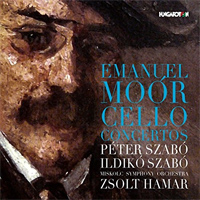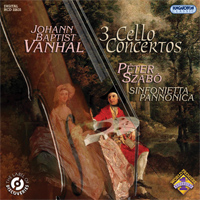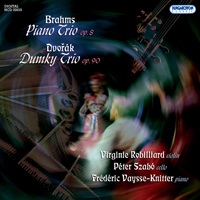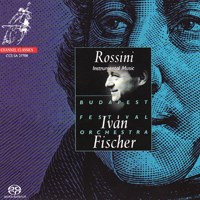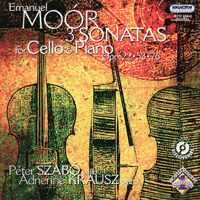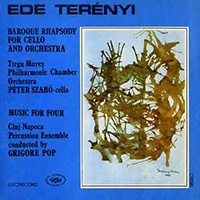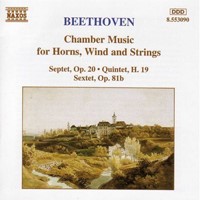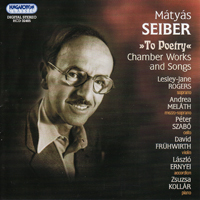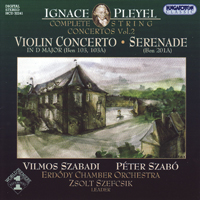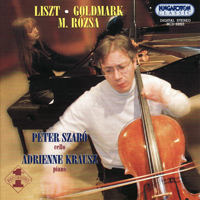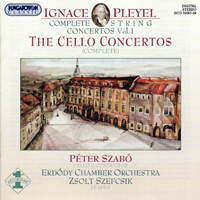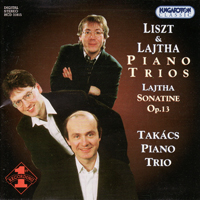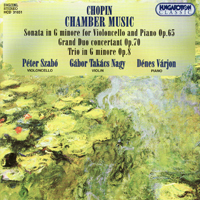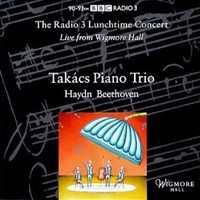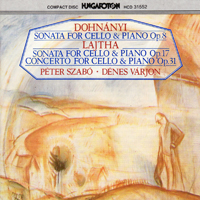CD Review
Pleyel Cello Concertos: in C, Ben 101; in C, Ben 104; in D, Ben 105; in C, Ben 106; in C, Ben 108 – Péter Szabó (vc), cond; Erdődy CO – Hungaroton 32067-68 (2 CDs: 130:19)
In a letter written on April 24, 1784 to his father, Mozart included the following comment about some recently published string quartets by his contemporary, Ignaz Joseph Pleyel (1757-1831): “They are very well written and very pleasant, and you’ll make his master out at once, too. [It would be] Good and felicitous for music, if Pleyel will some day be able to fill the place of our dear Haydn.” While no one other than Mozart could possibly have filled Haydn’s gigantic artistic shoes, Mozart’s statement would come true to a degree almost two decades later when Pleyel’s music was – to use a phrase from our time – at the top of the charts. He was also one of the continent’s leading engravers of music. In this area, Pleyel’s legacy is immense, for in the 39 years of the firm’s existence, Maison Pleyel issued over 4,000 works, including those of Beethoven, Clementi, and Haydn. Among the historically important achievements of Maison Pleyel was the issuance of the first miniature scores. In 1807, the firm began to manufacture musical instruments, chief among them, pianos. These were exceptionally popular, especially with Chopin, who – had it been possible – would have performed on them and nothing else.
The road to success for this native of Lower Austria began in his youth when his father apprenticed the musically precocious child to Johann Wanhal, who later entrusted the teenager to Haydn for further study. After years spent in Italy and later Strassbourg, Pleyel – at the invitation of an organization known as The Professional Concerts – went to London, where it was hoped his prodigious talent and name recognition would rival that of Haydn whose works were being produced at the Salomon Concerts. Pleyel eventually returned to France where in 1795, and in the wake of the Revolution he founded his publishing firm.
Since Haydn, who was most responsible for developing and shaping Pleyel as a composer, wrote primarily instrumental music, it should come as no surprise that the student walked the same path. Pleyel’s output surpassed that of Mozart in quantity; in addition to symphonies, sinfonies concertante, chamber music for varying combinations of instruments and ensembles of equally diverse size, stage works, and music for the church, Pleyel also wrote a respectable number of concertos, including five for violoncello. Written over a 15-year span beginning in 1782, they were penned after his talent had ripened. The concertos on this two-CD set are pure Classicism. Truly beautiful, with full-throated melodies, they are attuned to the rich, sensuous, and singing baritone timbre of the violoncello. Their three-movement structure is identical: an opening allegro in sonata form, a cantabile slow movement, and a rondo or sonata rondo finale that bristles with energy and wit and sparkles with dazzling technical episodes. Like Pleyel’s symphonies and quartets, the cello concertos achieved considerably popularity with audiences and performers alike. One of them (Ben 104) existed in editions by nine separate publishers, and there were yet other arrangements for viola, fortepiano, flute, oboe, bassoon, and clarinet. While there is no shortage of contemporary sources, this Hungaroton set – the first in a cycle of Pleyel’s string concertos – offers critical editions by cellist Péter Szabó, based upon the composer’s autograph scores.
The name that comes to mind when hearing these works is once again that of Haydn, and the listener is faced with a comment from the ubiquitous Dr. Charles Burney, who observed, “The ingenious and engaging composer [was] drawing rather more from his fountain of invention” than it would sustain. Burney also noted that several of London’s cognoscenti felt Pleyel’s attempts to follow in the footsteps of his former teacher and friend were becoming too emulatory. But over two centuries later, we should attempt to view Pleyel’s music in its own light and not in the shadow of one of the greatest composers in the history of Western music.
Péter Szabó owns a generous, full-blooded tone that is never overdone; he plays with exceptional sentiment, lyrical warmth counterbalanced by appropriate dramatic weight, producing a series of stylish discourses in music-making. The Erdődy Chamber Orchestra is an excellent ensemble, possessed of a thorough grasp of the idiom. They perform with superlative strength of ensemble and therefore deliver both cogent and cohesive results. The sound is quasi-realistic and successfully juggles the soloist and orchestra in an aurally friendly environment. Aficionados of the cello concertos of Haydn and Boccherini would do well to explore this repertoire, as would those who have and unashamed love for music with grace, elegance, and style in spades.
Michael Carter
Fanfare Magazine
May 2004


